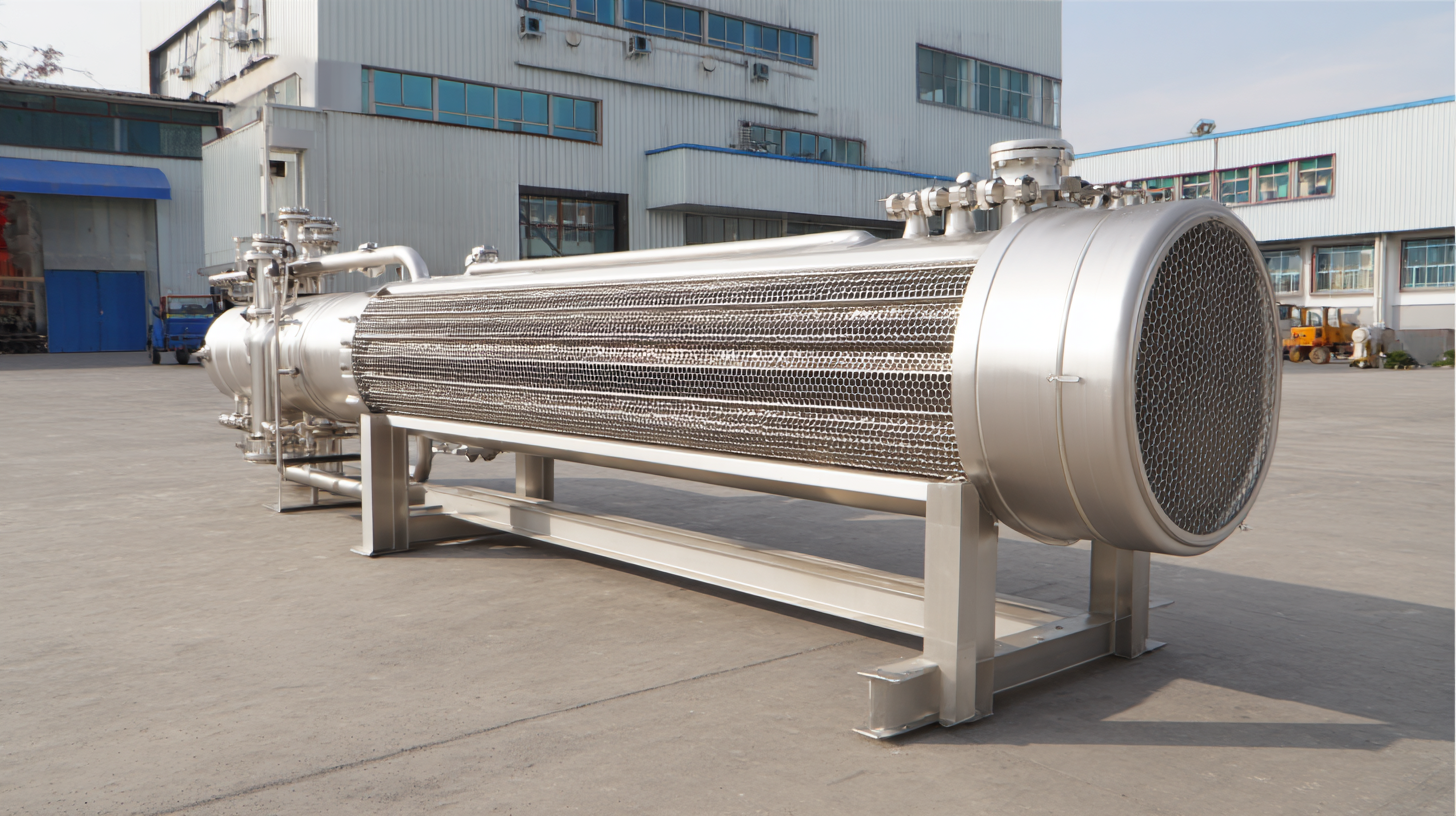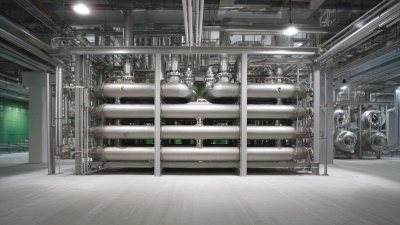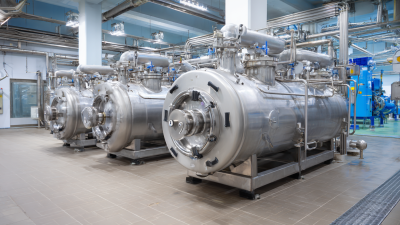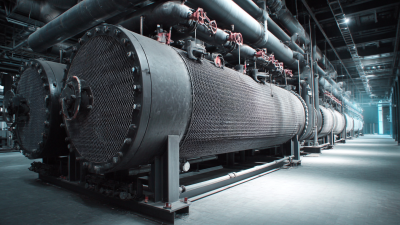Leave Your Message
The market for Marine Heat Exchangers is poised for significant growth in China as we approach the 138th Canton Fair in 2025. According to a recent report by Market Research Future, the global marine heat exchanger market is expected to reach USD 50 billion by 2025, driven by increasing demand for advanced cooling and heating technologies in marine applications. Specifically, in China, factors such as rising investments in shipbuilding and marine industries, coupled with stricter environmental regulations, are expected to propel the market forward.

Furthermore, the integration of innovative designs and energy-efficient systems in marine heat exchangers will play a crucial role in enhancing operational efficiency for various maritime industries. As such, the 2025 Canton Fair will serve as a pivotal platform for stakeholders to showcase the latest advancements, trends, and solutions in the Marine Heat Exchanger sector, thereby shaping the future landscape of this vital component in maritime engineering.
The upcoming 2025 Canton Fair is set to showcase significant advancements in marine heat exchanger technologies, reflecting the growing demands of the Chinese maritime industry. The emergence of innovative materials and designs will play a vital role in enhancing the efficiency and sustainability of marine heat exchangers. As the industry shifts towards eco-friendly solutions, the focus will be on integrating state-of-the-art thermal management systems that aim to reduce energy consumption and improve overall performance.

At the same time, the recent international marine geology conference underlines the importance of collaboration in the field. The unveiling of cutting-edge solutions, such as those associated with deep-sea exploration, will likely influence developments in marine engineering, including heat exchangers. The interplay of geological advancement and marine technology paves the way for breakthroughs in thermal exchange systems during the fair, potentially setting new industry standards for efficiency and sustainability.
The marine heat exchanger sector in China is poised for significant transformation by 2025, influenced by changing market demands and technological advancements. With the growing emphasis on energy efficiency and sustainable practices, manufacturers are increasingly focusing on innovative designs and materials that enhance heat transfer performance while minimizing environmental impact. This shift is likely to attract both domestic and international players, as they aim to capitalize on the expanding market.

Tips: To stay ahead in this evolving landscape, companies should invest in research and development to create products that align with emerging regulations and consumer preferences. Additionally, strategic partnerships with technology providers can facilitate access to cutting-edge innovations that improve operational efficiency.
Furthermore, as the market for marine heat exchangers grows, there is an increasing trend towards customization. Clients are demanding tailored solutions that cater specifically to their unique operational needs. This trend underscores the importance of flexibility in manufacturing processes to quickly adapt to varying customer requirements. Emphasizing dialogues with end-users can provide valuable insights that drive product innovation and customer satisfaction.
The marine heat exchanger market is undergoing significant transformation due to increasingly stringent environmental regulations. By 2025, the International Maritime Organization (IMO) aims to reduce greenhouse gas emissions from ships by at least 50% compared to 2008 levels. This regulatory landscape is expected to drive innovation in heat exchanger designs, emphasizing efficiency and sustainability. According to a report by Grand View Research, the global marine heat exchangers market is projected to grow at a compound annual growth rate (CAGR) of 7.3% over the next five years, with a substantial focus on eco-friendly materials and designs.
Manufacturers are being pushed to develop marine heat exchangers that not only comply with new regulations but also enhance energy recovery and reduce operational costs. For instance, the integration of titanium and other corrosion-resistant materials is anticipated to see a surge, as these components provide better performance in harsh marine environments while meeting the regulatory standards. Additionally, increased investments in R&D for advanced manufacturing techniques like additive manufacturing are paving the way for lightweight and more efficient designs. In 2024, an estimated 40% of new builds are expected to incorporate next-generation heat exchangers that meet the latest environmental criteria, highlighting the shift towards greener shipping solutions.
This bar chart illustrates the projected market share of different marine heat exchanger designs in response to environmental regulations in China by 2025. The data reflects the increasing emphasis on efficiency and sustainability in design models.
The Chinese marine heat exchanger market is poised for significant expansion, driven by rising industrial activities and the growing demand for efficient thermal management systems. According to a projected analysis, the overall heat exchanger market is expected to grow from USD 18.9 billion in 2025 to USD 42.4 billion by 2035, reflecting a robust compound annual growth rate (CAGR) of 8.4%. This acceleration in growth is attributed to increasing investments in heavy-duty industrial operations, where reliable heat exchange solutions are crucial for optimizing energy usage in processes.
Key players within the Chinese market are positioning themselves strategically to capitalize on this trend. The competitive landscape indicates that shell and tube heat exchangers dominate market sales, accounting for approximately 40% of the segment. With the anticipation that the global air-cooled heat exchanger market will rise from an estimated USD 4.48 billion in 2024 to USD 6.25 billion by 2030, it becomes evident that innovation and technological advancements in heat exchange solutions are vital for maintaining competitive advantage in this expanding market.
The insights from various industry reports emphasize the necessity for stakeholders to adapt to evolving customer needs while enhancing operational efficiencies in the marine sector.
The marine heat exchanger market is poised for significant advancements as we approach 2025, particularly highlighted during the upcoming Canton Fair. The increasing demand for energy efficiency and sustainable practices is driving innovation in marine heat exchanger systems. Recent reports indicate that the global marine heat exchanger market is projected to grow at a compound annual growth rate (CAGR) of 4.5%, reaching approximately $1.5 billion by 2025. This growth is fueled by the rising adoption of eco-friendly technologies among shipbuilders and operators, especially in the Chinese maritime industry.
Innovative applications of marine heat exchangers are emerging, particularly in the realms of waste heat recovery and hybrid propulsion systems. According to a study by the International Maritime Organization, the implementation of waste heat recovery systems can enhance fuel efficiency by up to 15%. This not only reduces operational costs but also minimizes the carbon footprint of marine vessels. Furthermore, advancements in materials technology, such as the use of titanium and advanced composites, are paving the way for lighter, more efficient heat exchangers, optimizing performance in harsh marine environments. As the industry evolves, these innovations will position Chinese manufacturers at the forefront of global maritime technology.
| Parameter | 2023 Data | 2024 Projections | 2025 Trends |
|---|---|---|---|
| Market Size (Billion USD) | 2.5 | 3.0 | 3.6 |
| Annual Growth Rate (%) | 8.5 | 10.0 | 12.0 |
| Key Technologies (Emerging) | - Thermal Transfer Enhancements - Eco-friendly Materials |
- Smart Technologies - IoT Implementations |
- AI Optimizations - Energy Efficiency Innovations |
| Regulatory Impact (0-10 Scale) | 6 | 7 | 8 |
| Environmental Concerns (0-10 Scale) | 5 | 6 | 7 |






